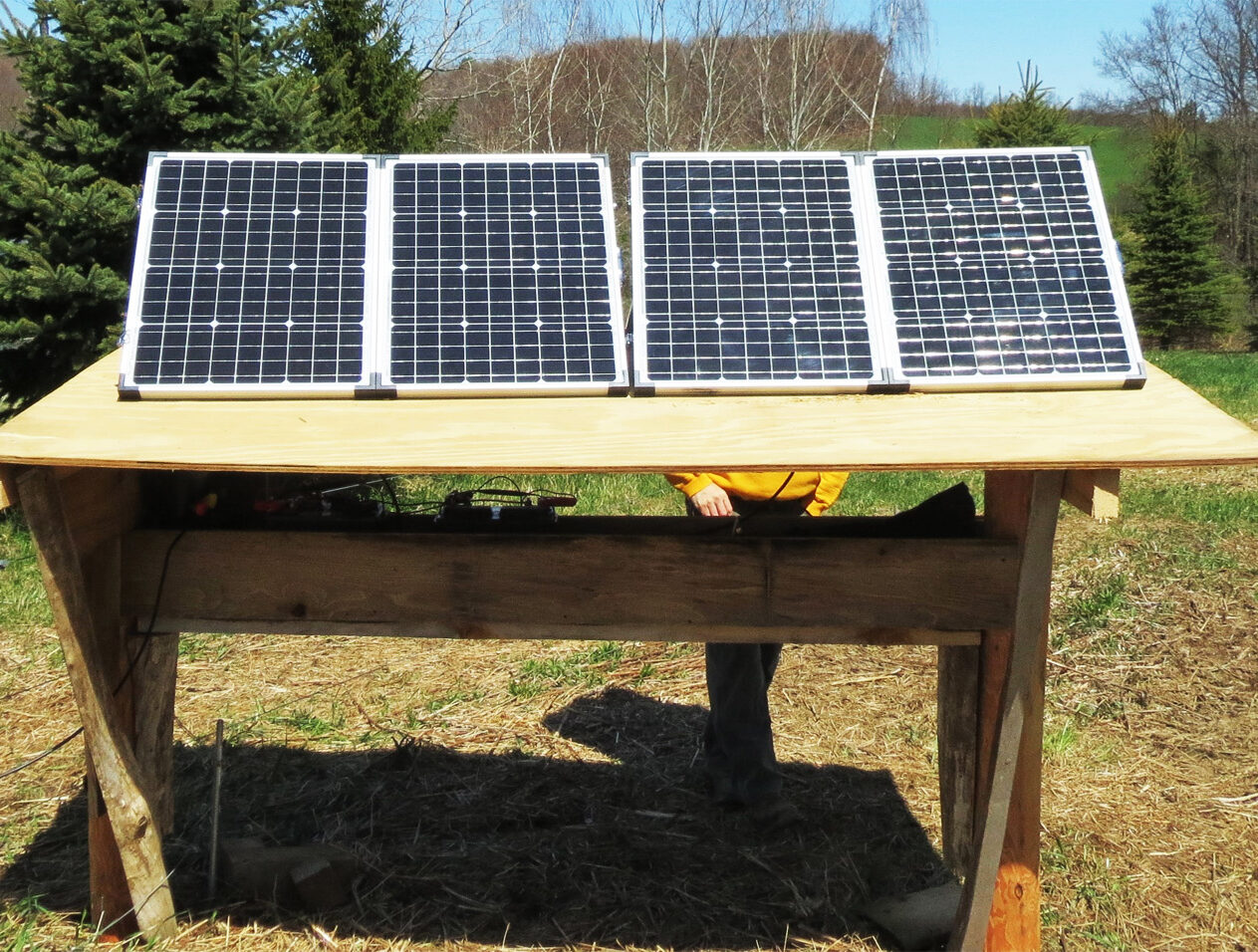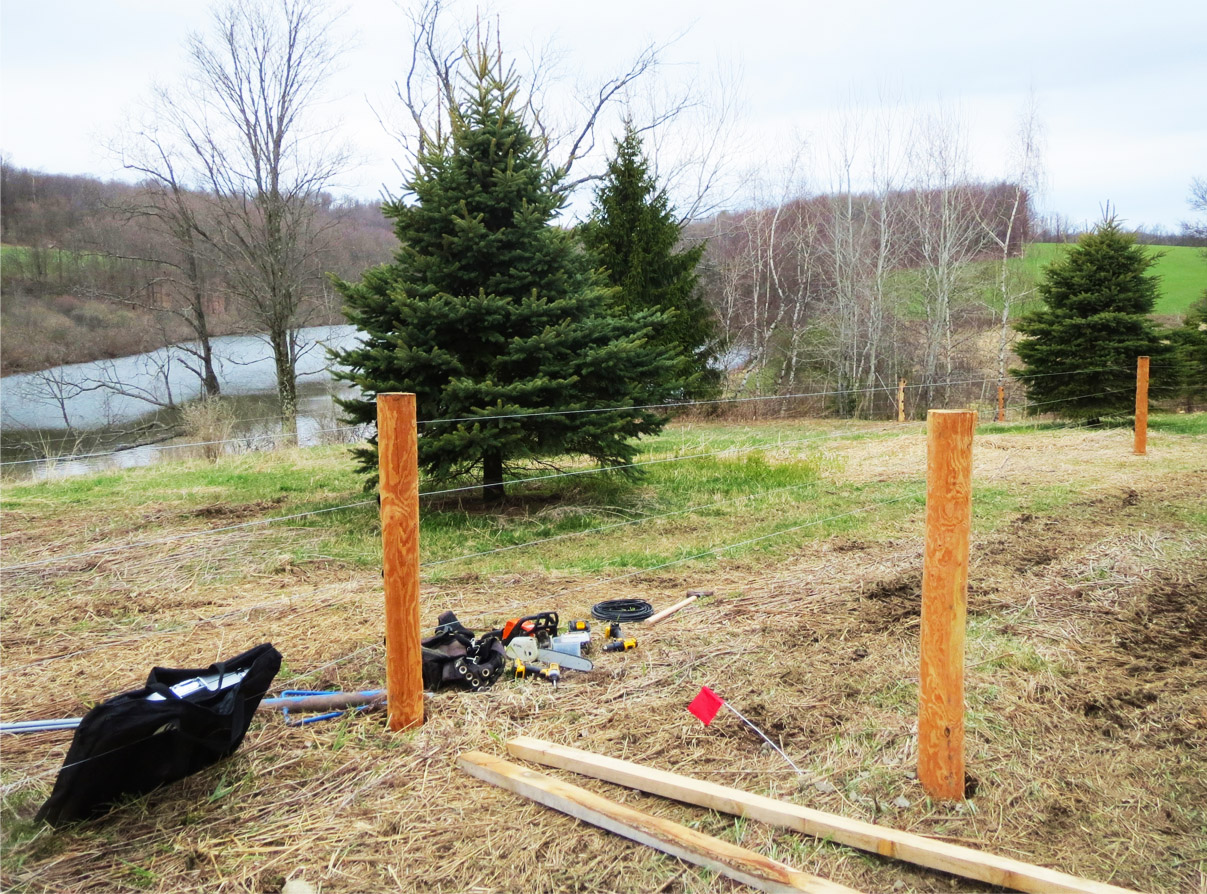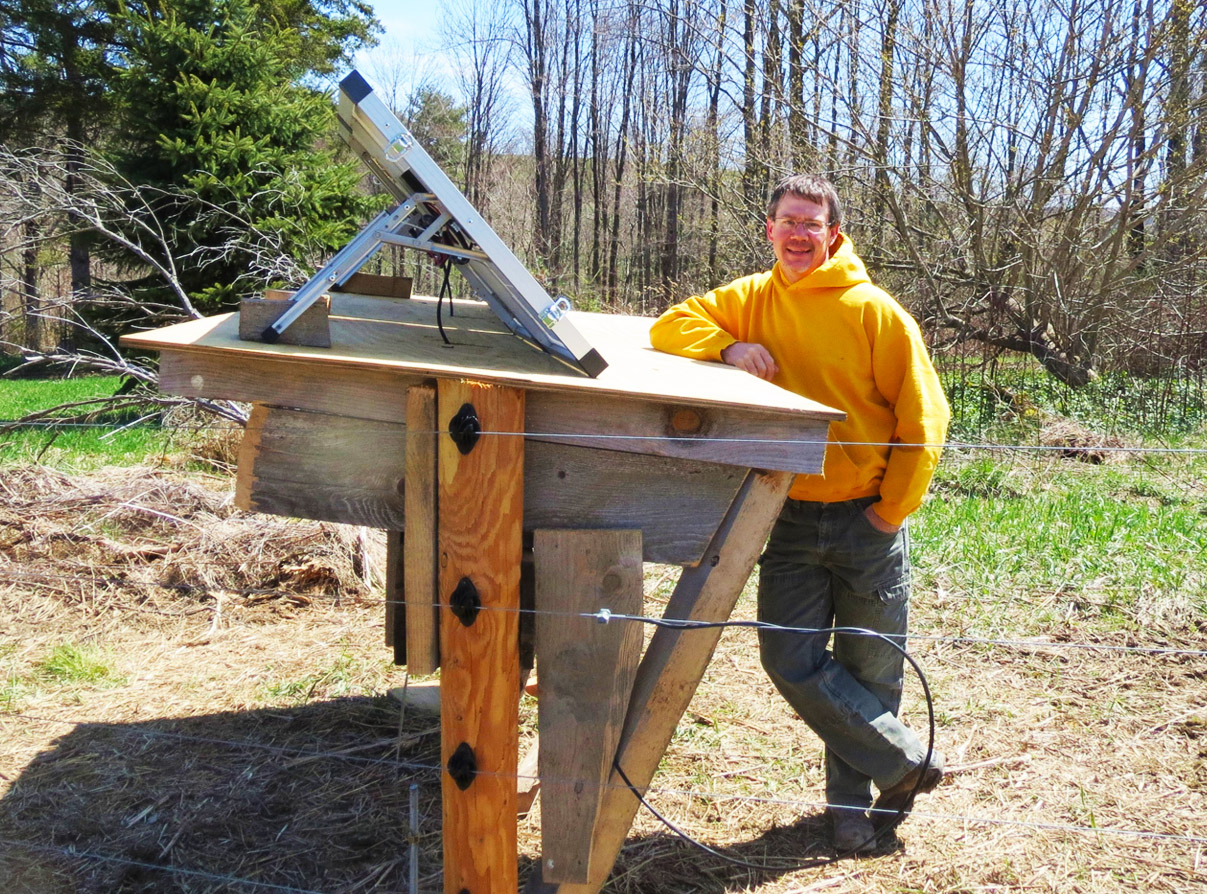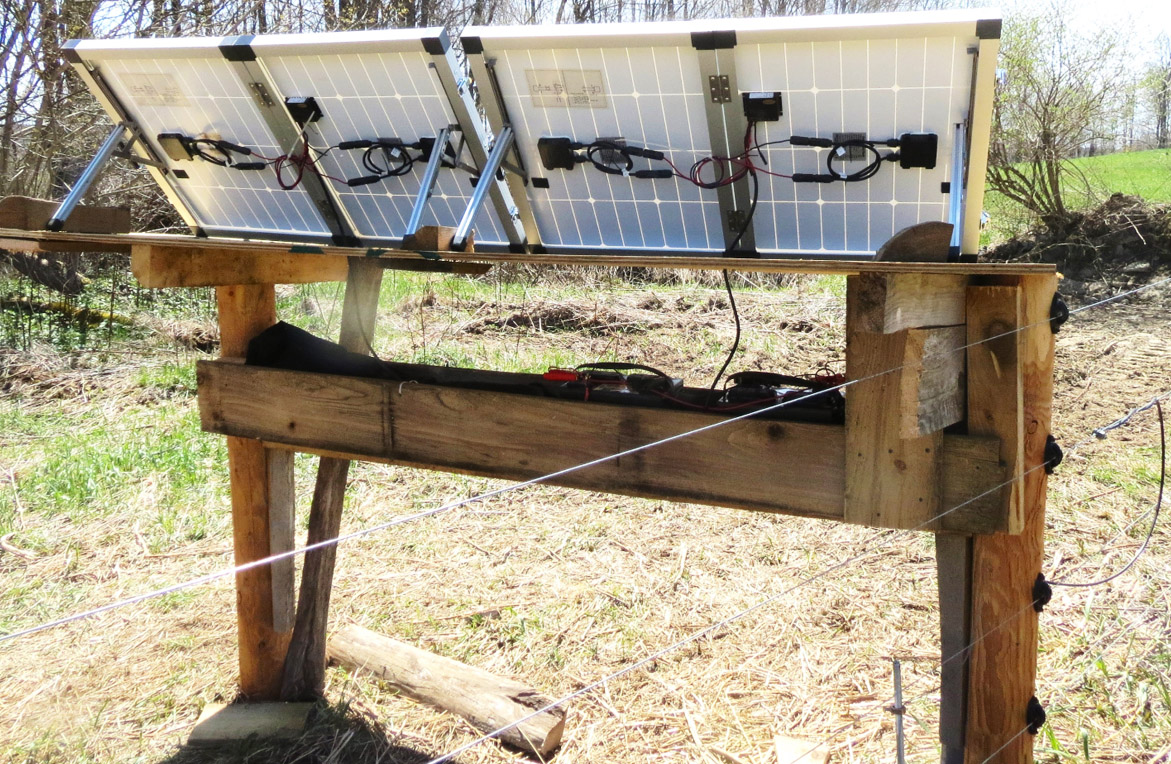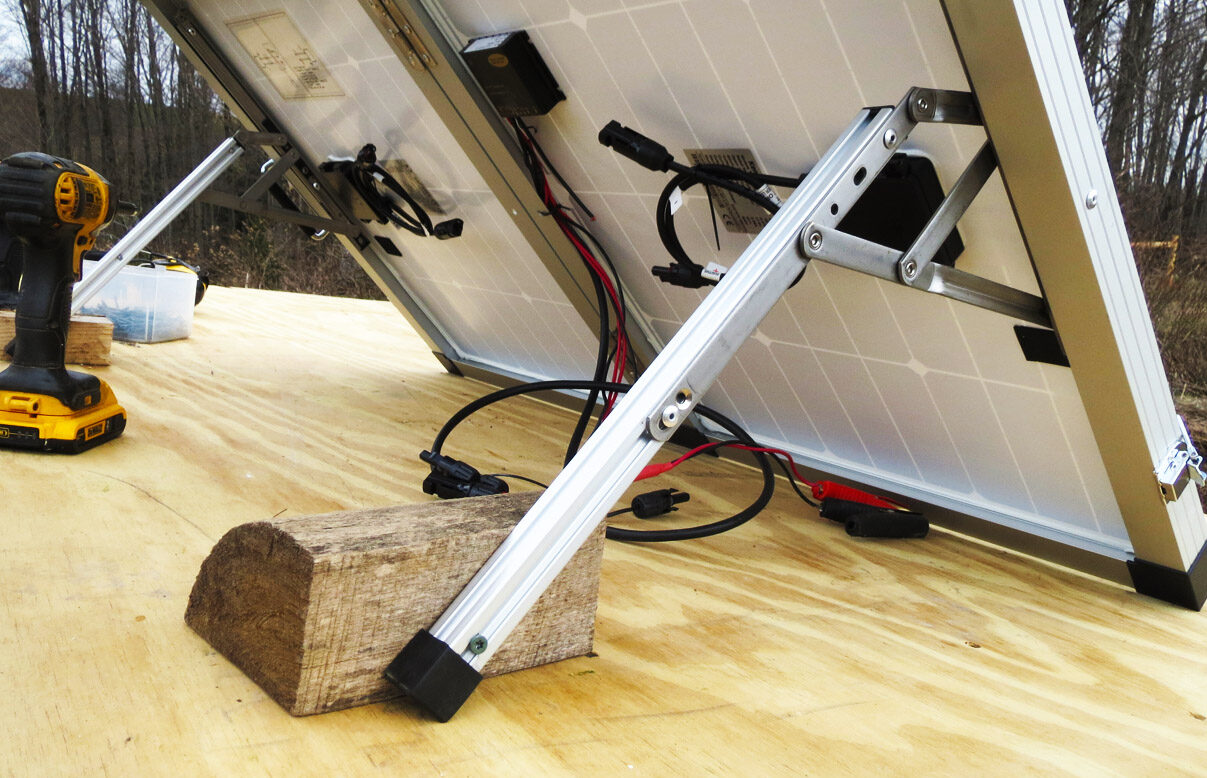Submitted By: Troy Bishopp
Madison County SWCD / USC Grazing Specialist
Last month, we completed an organic 4 strand high tensile pasture system fence with a stream and pond buffer. The concern was providing enough shock value at this remote location to manage the animals and give the farmer peace of mind. Using the typical recommendation of one joule per mile of fence to maintain an acceptable voltage, (>3000 volts), we settled on a 16 joule battery/plug-in optional unit with solar panels.
Working with the nice folks at Kencove Farm Fence (Kencove.com), on our first off-the-grid fencing project, we designed a system that was semi-portable, in-budget and would work consistently. Design criteria included locating a due-south, sunny spot away from public view, having enough solar panel (10 watts per joule) to keep batteries charged, putting in 6 ground rods, installing fence switches and building a practical, water-proof, “fencer station” where fence components can be disassembled and put away for the winter.
Our basic system to power 15,000 feet of 4 strand fence was around $1500 (Fencer-$360, 2-200 watt portable solar panels-$792, 2-Marine batteries-$230, Grounding system-$100, Wood-$50 plus labor). So far the system is delivering over 8000 volts of animal control but will likely diminish as weed load progresses. It has been a positive experience and we will continue to monitor the installation for ruggedness and sustainability. The solar panels have a 5 year warranty and the fencer has a 2 year warranty. If you have a fence/fencer question, we’re happy to share our experiences.
Watch a video from Watershed Wednesdays, our 2020 Watershed Forum of mini webinars where Troy discusses this project and answers questions asked by webinar participants below:
Project Details
OBJECTIVE:
To electrify 15,000 feet of 4-strand fence
Total Project Cost:
$1,500 plus labor

